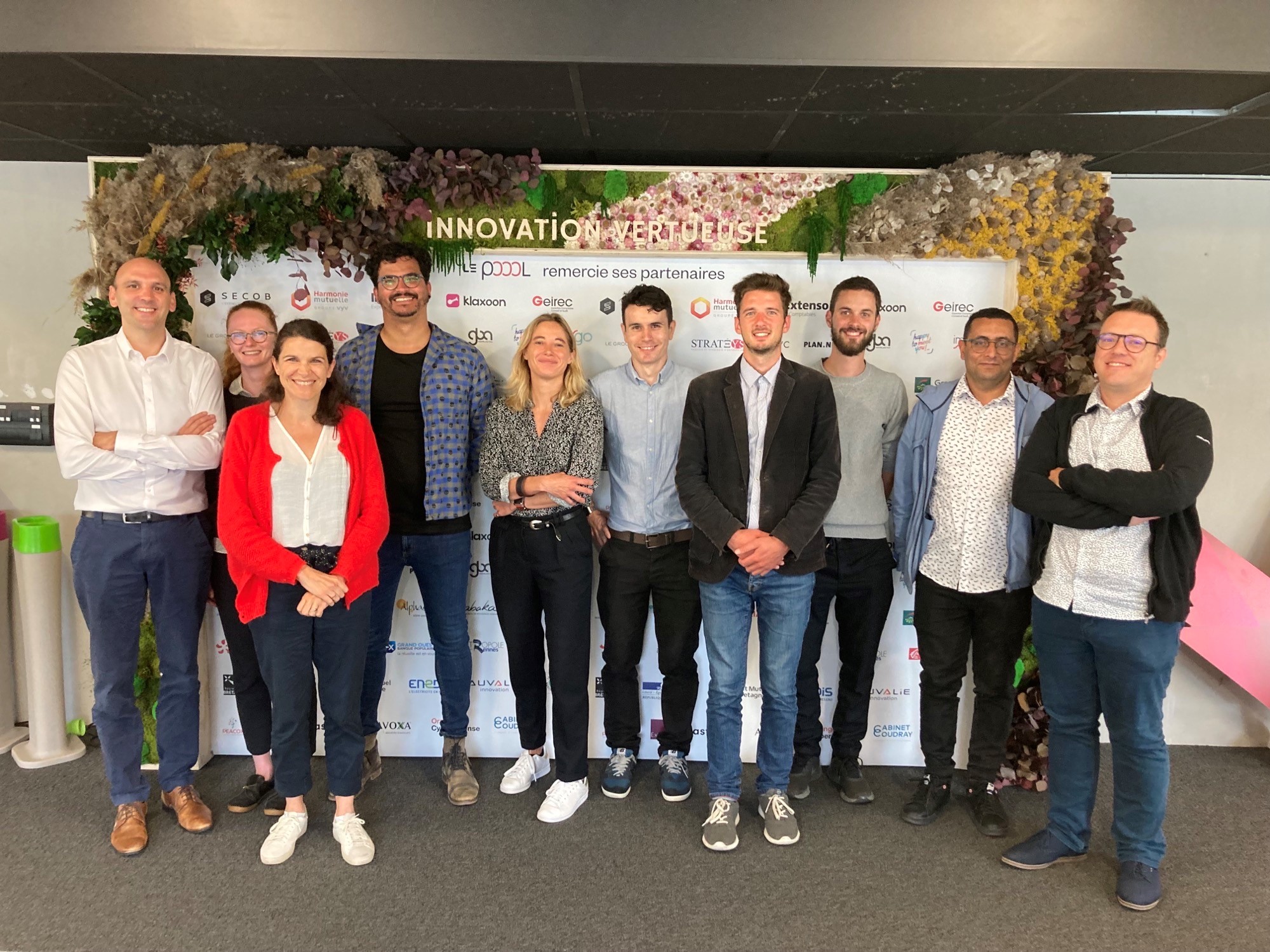“Pitching? Not as easy as watching it!” A look back on the AMI Emergence training

The participants of the AMI Emergence training, including Daniel (fourth from the left) and James (sixth from the left).
BIENVENÜE Fellows Dr James Behan and Dr Daniel Manzoni de Almeida participated in the last few weeks in the AMI Emergence training. Co-organized by the technology transfer office SATT Ouest Valorisation and Brittany’s technopoles, this training aimed at finding innovation potentials in research and supporting Breton researchers on an entrepreneurial path. James and Daniel share about their experience and what they take from this training.
[BIENVENÜE] What is the AMI Emergence training in a few words?
James: We worked on how to exploit or promote our work in an entrepreneurial way, on how to look at your research and how to offer it to potential clients.
Daniel: As a researcher I only received so far training on how to do research. Here, the aim was different: how can I think my research as a potential for business?
James: The training took place during several full days over weeks, online and in person in Brest and Rennes. We were a very small group. This allowed for hands-on sessions, with a lot of time to present ideas and to receive feedback. It was in French and I could understand the sessions and even present my last pitch in French. Daniel could do his in English.
Why did you chose to apply to this training?
James: I wanted training in communication for an audience outside of the scientific field. It was a very good opportunity to do it as there were people outside my field (chemistry), but also people from local technological transfer offices and local governments during the final meeting.
Daniel: I was looking to expand my skills in entrepreuneurship, on how to think a research project as a business, and how an entreprise is working. In my field (science education), opportunities to develop a business from research works are not as evident as for other fields. We still have to consider how valuable our work can be.
What is the most important thing you take from this training?
James: The actual training of giving a pitch. We presented, recorded and reviewed our performances, pointing out mistakes. Not the nicest experience in some ways, but it was extremely helpful. It made me think about the words you have to use depending on your audience, and how important is to know your audience. There are a lot of words you assume people in your discipline know, but the outside people don’t. You have to remember that.
Daniel: The most important thing I retained is the change in the way to think about your idea. In research, you think with your background on how to answer your research question. In an entrepreneurial mindset, you have to ask yourself: how to improve my idea so it is valuable for a business? It opened my mind.
What did surprise you the most during the training?
James: It is a piece of advice given by the coordinator of SATT Ouest Valorisation: seek advice over the phone instead of arranging an one-on-one meeting. Committing time for a meeting or writing a long email can actually be annoying, when over the phone it is easy, people just have to speak! That way people can give you more information. I still have to try it out…
Daniel: Making an impactful communication, such as a pitch, is really difficult. You want to convince somebody else, and really mean it in the time frame you have. When you watch people pitching on YouTube it seems easy but doing it is another story. You have to choose the right words, connect with the audience, be aware of your body… that is a lot to do over 3 minutes!
How do plan to re-use this training in the future?
James: There is a follow-up meeting planned with SATT Ouest Valorisation. I am not sure yet how I will re-use it. Now I am in the at-the-lab phase, focusing on my research project. If possible, I would like to have a link in the future with a company or with the SATT, to pursue a patent and/or have a commercial use of my results. In the long term, I will certaintly use the skills I acquired, in particular the approach given on how to speak to a general audience.
Daniel: I agree with James. My main focus now is also doing the research, and be strong in my research. I have to mature my ideas on how to propose a service. Overall, I will use the new perspective on how to think outside the box. This training was the opportunity to develop networking and collaborations.
We are now working with James on a project about science education. The dissemination and communication of the scientific knowledge that we produce is very important. One way of disseminating knowledge is for the researcher to produce dynamic and innovative classes with the theme of his work that can delight young people. James and I are starting to develop a project to work together to transform the knowledge of chemistry (James’ area of expertise) into sequences of lessons for elementary school. Besides the dissemination of knowledge, this is an important science education training project for future teachers that can reach students from all over the world. I am open to collaborations from all other researchers in the BIENVENÜE program who are interested in transforming their scientific knowledge into fun and inspiring science lessons for students.
About their BIENVENÜE research projects
James, a chemist, is working on materials providing greener electrocatalysis at the ISCR lab at Université de Rennes 1
Daniel, a researcher with an interdisciplinary background, is working on science didactics and vaccination at the CREAD lab at the Université de Bretagne-Occidentale.